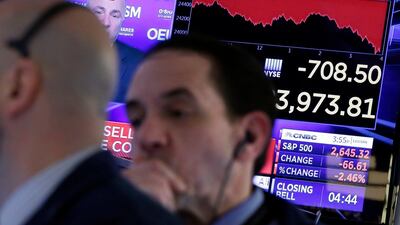Institutions do better than individuals at active fund management, but given that both come out losers the underlying message is that picking stocks and bonds is a game neither group should play.
The vast majority of all mutual fund and institutional accounts failed to keep pace with their benchmarks over the past decade, according to a new report from S&P Dow Jones Indices examining the impact of fees.
And while institutional accounts, owned by large and deep-pocketed investors with formal selection processes, usually performed better than their mutual fund peers, the difference is almost always not because their managers are better. Instead, institutions are better at negotiating lower fees.
In other words, and we have learned this before, active fund management is a fool’s errand. Institutional accounts did better, but it was all a little like the old joke in which the man frequents a restaurant because “the food is terrible, but the portions are large".
Unless you are an active mutual fund investor, in which case your terrible food is a bit more expensive.
The report examined the impact of fees on mutual fund and institutional account performance over the past decade, using data from the University of Chicago and eVestment Alliance.
“Across various categories within the domestic equity space, the overwhelming majority of active managers, both retail and institutional, lagged their respective benchmarks,” according to the report.
“Overall findings suggest that on a gross- or net-of-fees basis, the U.S. equity space poses meaningful challenges for active managers to overcome.”
"Meaningful challenge" is somewhere between kind and a massive understatement.
______
Read more:
Finance guru Andrew Hallam’s new guide for expats wanting to become wealthy
Has the good fortune for ETFs run its course?
The return of active has been helped by the pitfalls of passive
______
Among large-cap equity mandates benchmarked to the S&P 500, 85 per cent of mutual funds underperformed the market over 10 years after fees are deducted, as well as 80 per cent of institutional accounts. Looking at the same category gross of fees mutual funds bested institutions slightly, in that only 68 per cent of them failed to match market return over 10 years, as compared to 69 per cent of institutional accounts.
This illustrates both that institutions are better positioned to drive a hard bargain, but for a service which is effectively giving them what they deserve good and hard.
Wait, I can almost hear the active managers say, “you are cherry-picking data”.
“If only,” I can only ruefully reply.
Net of fees 95 per cent of large-cap growth mutual funds and 90 per cent of institutional accounts lagged. The same statistics for mid-cap core funds were 98 and 95 per cent, respectively. My sense of fairness impels me to tell you that in only one of the 17 categories of domestic equities did active mutual funds outperform, and that is large-cap value funds, where only 47 per cent failed to keep pace with their benchmark, gross of fees. Take fees into account, of course, and that number grows to 64 per cent.
There was not a single domestic equity category over the past 10 years in which investors would have been better off holding the typical mutual fund or institutional account. Not one.
But wait, our active manager friend chimes in, “domestic equity is a commodity, look at international and emerging markets, that’s where we add value". OK, let’s.
International small-cap equity is as close as it gets, but here too, while 48 and 50 per cent of mutual and institutional accounts beat their benchmark over a decade, this is only gross of fees. More than 60 per cent in both cases underperform when fees are counted. As for emerging markets funds, 86 per cent of mutual funds don’t match the index over our 10 years, nor do 79 per cent of institutional accounts.
In fixed income, comparisons between mutual funds and institutional accounts can’t be made as easily on an apples-to-apples basis, but the overall message is the same. While many more fixed income managers beat their index on a gross basis, the majority still do not when you take into account fees.
For example, a creditable 48 per cent of emerging market debt mutual funds lag their benchmark before fees, but that rises to a regrettable 76 per cent after fees. The best the industry can do in fixed income mutual funds is in investment-grade intermediate funds, where only 59 per cent lag. Not much of an advertisement.
Institutions paid a good bit less in fees for their fixed income active management but also got the same market-lagging performance.
While passive investing may possibly be, as Sanford Bernstein analysts put it recently “worse than Marxism,” active management, as shown in the S&P report, is socialism for fund managers.
James Saft is a columnist for Reuters

